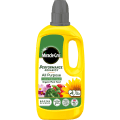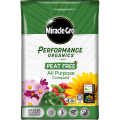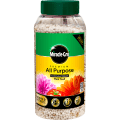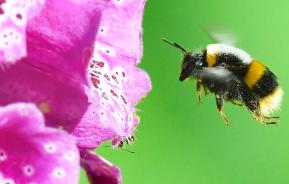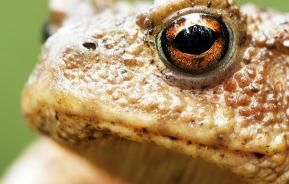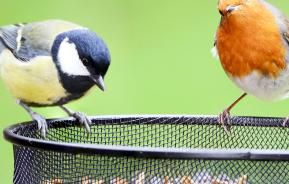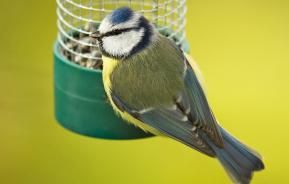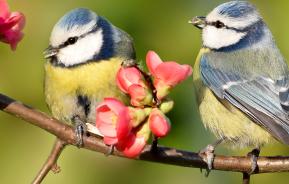Buying shop bought bird food is one of the ways most people think they can help the birds but that is only one part of the story. Along with food, birds need shelter and water, not just for drinking but also to bathe in to keep their wings clean.
Sometimes we hang up bird feeders and place bird tables out in the garden but find that the birds just don’t come and visit. This could be for many reasons but most often it will be to do with safety. If the birds feel at risk from predators then they will stay away.
Follow this guide to find out how you can make your garden a safe haven for birds, full of all the natural foods they like to eat, as well as how to provide safe spaces away from predators. Not only will you be helping nature but nature will be helping you. Birds will eat insects and slugs that can eat your prized garden plants, helping keep a natural balance. Watching birds and listening to their song is also a wonderful way to de-stress, be mindful and connect with the outside world.
Natural bird food
In the wild, birds get their food from seeds, berries and insects. Plant a variety of shrubs, small trees and flowers in your garden to attract the birds and keep them fed.

My top 10 plants for birds:
- Sunflowers: These are great fun to grow from seed and by leaving the seed heads on the stalk in the summer, you will be providing food for a whole host of birds.
- Verbena bonariensis: Great to grow from seed, these tall and beautiful flowers not only provide seed for small-beaked birds such as the beautiful goldfinch but also their flower heads attract loads of beneficial insects into your garden.
- Honeysuckle: A very versatile plant as not only do the flowers attract insects, but the leaves are food for caterpillars who in turn are food for baby birds in the spring. The berries in late summer/autumn are food too but the climbing plant provides protection and shelter.
- Roses: Especially those that provide hips such as rosa rugosa and dog rose.
- Hawthorn: A small tree or shrub that has beautiful blossom to attract insects but whose small berries (Haws) are a food source and can last well into winter.
- Cotoneaster: The bright red berries are often the last to be eaten by the birds meaning you can keep colour throughout autumn before they are eaten. Low-growing varieties of cotoneaster are also good for providing foraging shelter for ground feeders like blackbirds.
- Ornamental grasses: As well as adding gorgeous structure to your garden, these plants provide seed heads in autumn and they also provide wonderful nesting material in early spring.
- Native hedgerows: Many of our native hedges will provide berries and food for caterpillars but just as importantly they provide safe shelter and nesting spaces. Rather than always putting up a fence, why not grow a native hedge instead, great for wildlife of all shapes and sizes as well as the birds.
- Ivy: Last, but definitely not least, is one of the most all-round plants you can grow to help attract birds. Ivy has flowers to attract insects, black berries in the winter and leaves that are food for caterpillars. They also provide shelter throughout the winter and a safe haven from predators. They can be used as ground cover or trained to climb up a wall or fence giving a sheltered safe space for birds.
A plant that is often forgotten about is the lawn. Paving over or even putting down fake grass to replace a lawn means that a vital habitat for birds is lost. Lawns provide a home for many creatures that birds love to eat including worms and many insects. Birds love scrabbling about in lawns and *often the dew collected on the lawn provides a vital source of water for them. Try to leave a patch of lawn to grow a bit longer to entice even more insects in.
Extra help
If you don’t have the space for planting or a tiny patio or balcony then there is a huge variety of bird food and seed mixes available that you can buy to attract birds.
It’s also a good idea to supplement feeding during the winter and spring as that is when natural food sources are scarce and spring is when the birds need extra energy whilst they are feeding their young.
It’s a good idea to have different bird foods in your garden to attract as many different species as possible.
While bird food is specifically designed to be nutritious and attractive to birds, you can recycle household scraps to bring birds into your garden too, just remember that the food you put out won’t only be tempting to birds, but domestic pets and other wildlife too. If you're intending for it to be just for the birds, ensure that they are either put into a suitable feeder or at height & distance that other animals will not be able to reach.
Different foods for different bird types:
- Robins love mealworms, suet balls and cheese.
- Blue Tits love (unsalted) peanuts, mealworms and sunflower seeds.
- Blackbirds love meal worms, sultanas and rolled oats.
Once you start leaving food out for birds, they will soon get into the habit of frequenting your garden and so it is advised that you try to avoid going long periods without refreshing the food supply.
Use the right bird feeder and position it correctly
Just as there is a lot of different bird food available, there is an equal amount of bird feeders to suit the particular habits & behaviours of specific birds. You can choose from bird tables, hanging feeders, dining stations, mealworm feeders, suet feeders, ground feeders and even window feeders for those living in a high rise blocks. What feeder you choose to use, will determine the species of bird you'll attract to your garden.

If you have squirrels in your area it's wise to invest in squirrel-proof feeders so that you can be sure it’s the birds that benefit!
Ensure that whatever feeder you use is kept clean and dry. Remove any old or mouldy feed on a daily basis. This will help to reduce the chance of causing any illness in the birds. You can buy safe detergents to clean feeders and reduce the risk of Salmonella and Bird Flu.
How you position feeders and food in your garden will also determine the number of birds you attract. Birds will naturally feed in safe areas away from predators such as cats or foxes. Ensure feeders are well away from hedges, fences, trees and sheds, which will enable predators to strike.
Birds need water too
Birds need to have a good supply of fresh, clean water, to use for drinking as well as cleaning. Rainwater is ideal and can be collected. However you need to change the water regularly and clean the birdbath to get rid of any algae forming. In very cold weather keep water supplies free from ice by topping up with hot water from the kettle.

Finally, make sure you finish any hedge cutting before the end of March or wait till after the end of July as this is bird nesting season when they will be building their nests in shrubs, trees and hedges. If you desperately need to cut something back during this time then do make sure you check carefully for nests.


